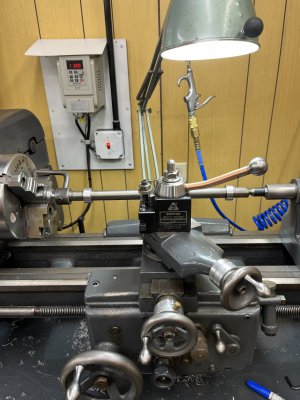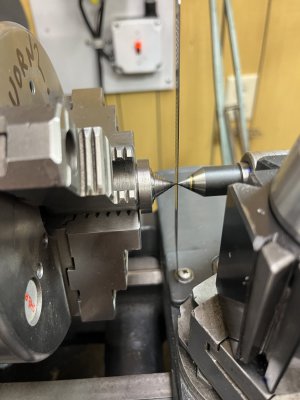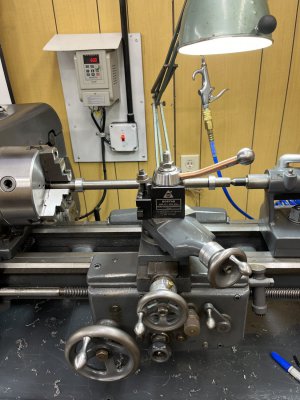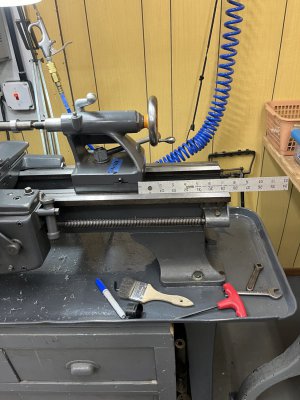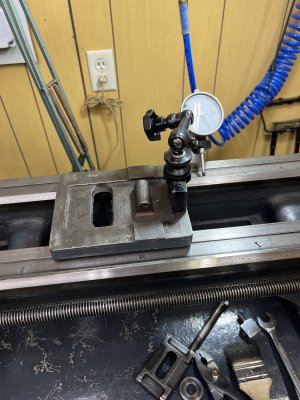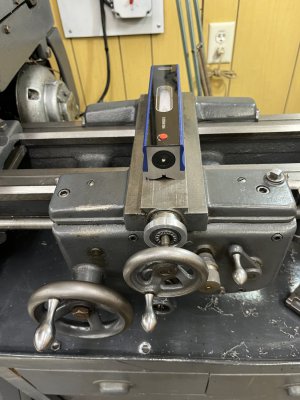Help me understand what going on here with my lathe. I’ve had a problem with the lathe cutting a taper (by mistake) when work is held in a 3 jaw chuck with a dead center.
A little background. It’s a Logan 10” model 815 lathe that is fairly new to me. Headstock is non adjustable for alignment, except by scraping. I have the lathe bolted to a concrete floor with leveling pads under it. I’ve leveled the lathe with a .0005 over 10” level. It’s dead center across the vee ways when measured at both the chuck end and the tailstock end. Also measured at midpoint- dead level.
I can eventually get it to cut without a taper ,with work in chuck and dead center, by adjusting the tailstock screws. But, if the next workpiece is a different length then it cuts a taper until I readjusted the tailstock again for that spot on the lathe bed. So, I have to adjust the tailstock to a different alignment at different spots along the bed in order to cut straight.
Is this a sign of bed wear and if so, is there much I can do about it?
Could it just be a worn tailstock that perhaps I could scrape back into alignment. I could do the physical scraping. (you guys helped me in the past to do two shapers). But I have little idea where to start on a tailstock and it might be the wrong sequence of operation.
I’m at the “fix it or junk it”stage so all help welcome.
A little background. It’s a Logan 10” model 815 lathe that is fairly new to me. Headstock is non adjustable for alignment, except by scraping. I have the lathe bolted to a concrete floor with leveling pads under it. I’ve leveled the lathe with a .0005 over 10” level. It’s dead center across the vee ways when measured at both the chuck end and the tailstock end. Also measured at midpoint- dead level.
I can eventually get it to cut without a taper ,with work in chuck and dead center, by adjusting the tailstock screws. But, if the next workpiece is a different length then it cuts a taper until I readjusted the tailstock again for that spot on the lathe bed. So, I have to adjust the tailstock to a different alignment at different spots along the bed in order to cut straight.
Is this a sign of bed wear and if so, is there much I can do about it?
Could it just be a worn tailstock that perhaps I could scrape back into alignment. I could do the physical scraping. (you guys helped me in the past to do two shapers). But I have little idea where to start on a tailstock and it might be the wrong sequence of operation.
I’m at the “fix it or junk it”stage so all help welcome.

